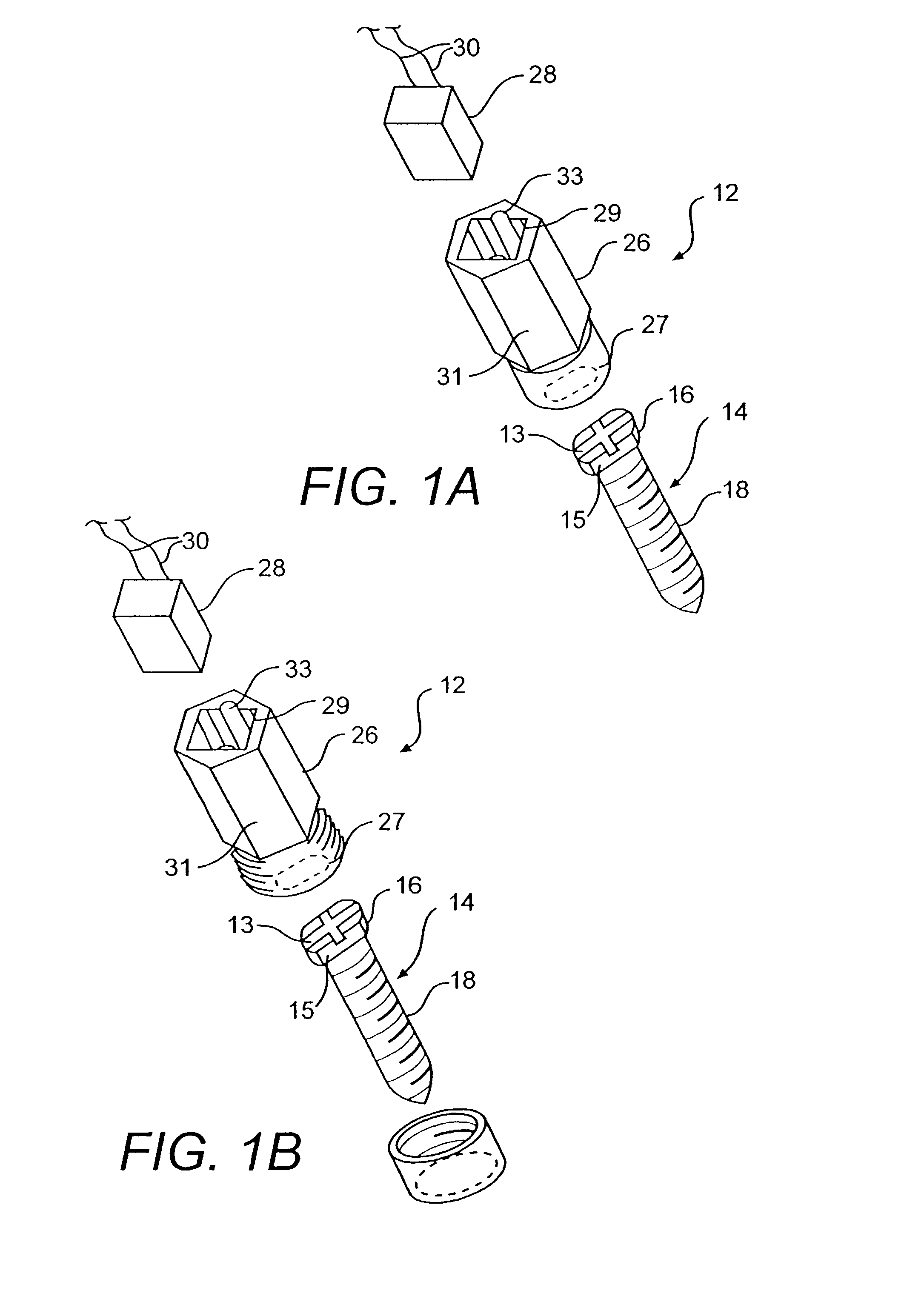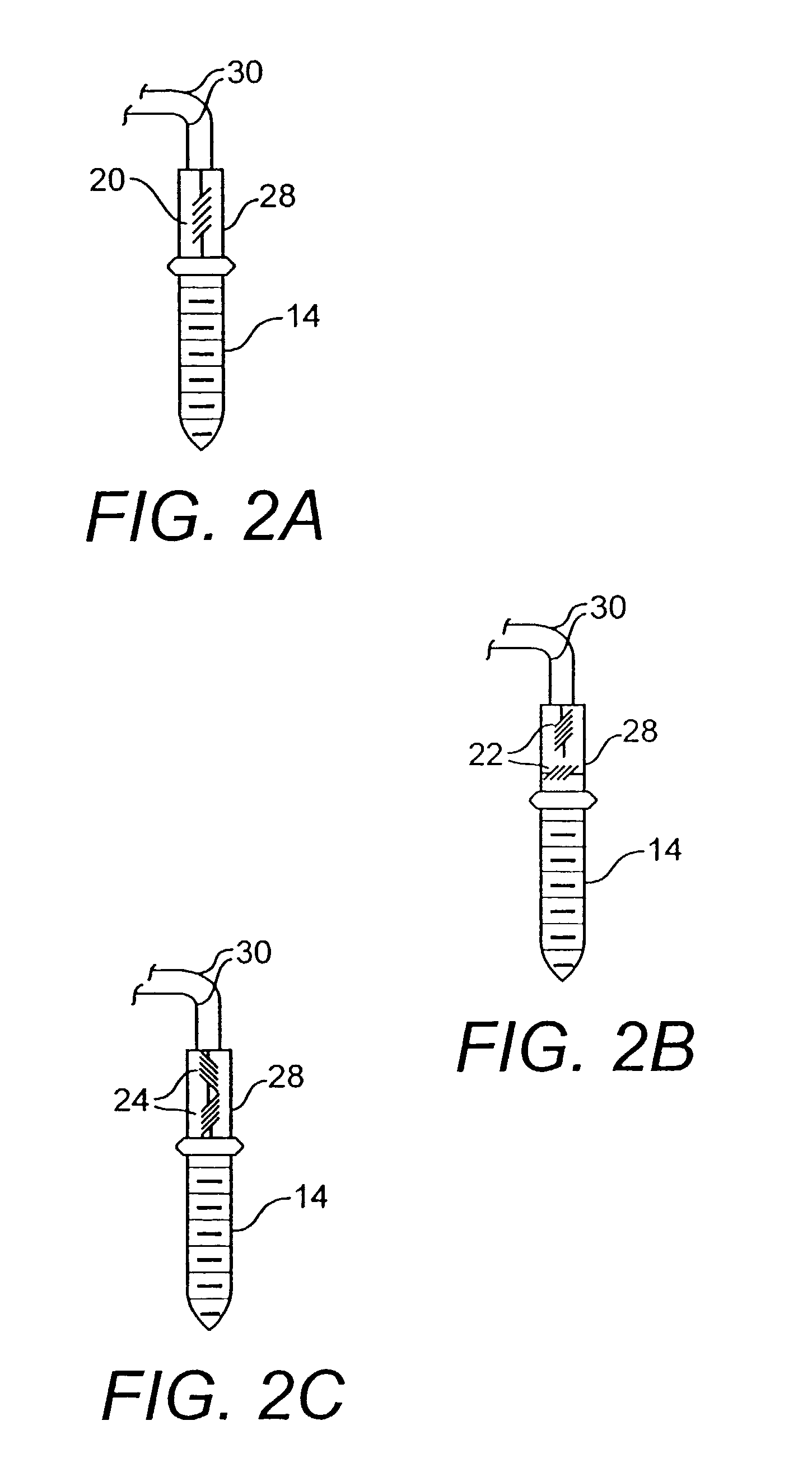Surgical sensor
- Summary
- Abstract
- Description
- Claims
- Application Information
AI Technical Summary
Benefits of technology
Problems solved by technology
Method used
Image
Examples
Embodiment Construction
[0048]The invention will now be described in connection with the Figures wherein like parts are numbered with the same reference numerals for ease of discussion.
[0049]In accordance with the invention, there is provided an integrated surgical anchor / localization sensor. An example of such an integrated unit is designated by reference number 12 in FIG. 1.
[0050]According to the invention, the anchor is configured to be secured to an anatomical structure. As illustrated in FIG. 1, an anchor in accordance with the invention may, by way of example, include a surgical screw 14. Screw 14 has a head portion 16, and a threaded portion 18. The threaded portion 18 is configured to be secured into boney structure such as portions of long bones, vertebral bodies, the skull, or any other boney anatomical structure. In an preferred embodiment, the anchor may be a 2.2 mm cross-drive screw, 3–7 mm in length. Preferably, the screw has keyed head portions 15 so that a connector may be securely fastened...
PUM
 Login to View More
Login to View More Abstract
Description
Claims
Application Information
 Login to View More
Login to View More - R&D
- Intellectual Property
- Life Sciences
- Materials
- Tech Scout
- Unparalleled Data Quality
- Higher Quality Content
- 60% Fewer Hallucinations
Browse by: Latest US Patents, China's latest patents, Technical Efficacy Thesaurus, Application Domain, Technology Topic, Popular Technical Reports.
© 2025 PatSnap. All rights reserved.Legal|Privacy policy|Modern Slavery Act Transparency Statement|Sitemap|About US| Contact US: help@patsnap.com



